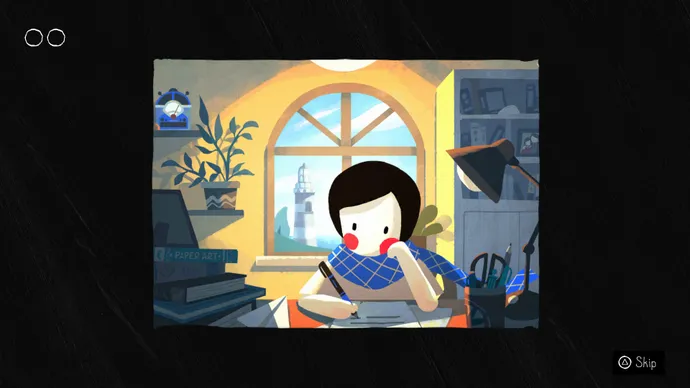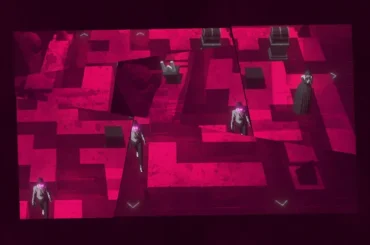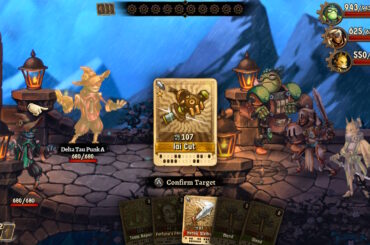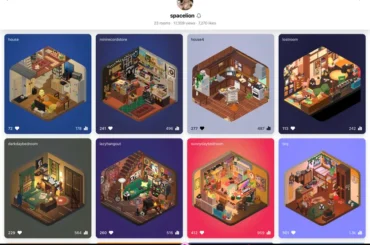A stunning paper-folding puzzler that crushed my self-esteem and tossed it in the bin.
Developer: Newfangled Games
Publisher: Newfangled Games
Release Date: May 21, 2024
Platform: Windows
Available On: Steam
Price: To Be Confirmed
Reviewed On: Intel Core i5-8600K, 16GB RAM, Nvidia RTX 2070, Windows 10
Let’s kick off this review with a question: What distinguishes a challenge that leaves you feeling triumphant and one that simply makes you sigh in resignation? I might sprinkle a few insights throughout this piece, like a Paper Trail, if you will. This puzzle game, aptly titled Paper Trail, invites players to solve various brain-teasers by folding the screen like a sheet of paper to create new pathways. Intrigued? Let’s dive in.
Paper Trail follows Paige, your typical lo-fi girl protagonist, who’s both studious and laid-back to the point that she’s gained space-time bending abilities. After countless hours of study, she’s been accepted into university for astrophysics, but her parents want her to stay in their sleepy seaside town. So, she decides to run away, lured by a deer she spotted in a dream. One character in her village is a lighthouse keeper named Winslow—perhaps a nod to the absurdity of life, but it does set up a nice backdrop.
As Paige embarks on her journey, she must navigate obstacles using her unique powers to create new paths. This is where the folding mechanic comes into play. At any time, you can preview the reverse side of the screen. For instance, in an early puzzle, Paige needs to cross a river; you’ll see a bridge on the flip side, which you can then fold into place. The game later introduces additional elements like movable blocks, statues, and sliding platforms. However, the twist is that you can’t move the section of the screen where Paige stands, nor can you pull the page over her. This means it’s not just about figuring out how to manipulate the environment but also positioning Paige correctly to avoid blocking your own path.
What initially seems like a charming graphic novel adventure with occasional puzzles soon transforms into a maze of challenges akin to an airport puzzle book. The game features what I can only describe as “puzzle dungeons.” Much like an effective dungeon in an atmospheric RPG, these spaces feel both daunting and endless. Each puzzle builds upon the last, adding new layers of complexity. There were moments when I admired the art and the cleverness of a puzzle’s design right after finishing it, only to feel a wave of disconnection because I wasn’t enjoying the process at all.
Part of the issue is a button that offers step-by-step folding instructions. I couldn’t resist using it, which stripped away any sense of accomplishment. Even when I resisted the temptation to peek, I still felt flat after solving a puzzle. I’d complete a challenge, move to the next screen, only to be met with an even larger, more intricate puzzle that made me sigh in resignation and prepare to start rearranging corners and edges once more.

Some puzzles allow you to assess and intuitively solve them before taking any action. While this should feel satisfying, it instead felt like going through the motions. Perhaps knowing I had the hint screen available made everything feel disposable. There’s an inherent satisfaction in puzzle-solving that Paper Trail seemed to lack for me, leaving me stressed and feeling foolish for not enjoying such a beautiful and inventive game.
How could I possibly remain frustrated with a game featuring such stunning art? I must be a soulless emotionless goon for not feeling enchanted by its beauty. The game boasts a rich color palette and intricate details—ancient-looking spaces, crumbling tiles, and trees that sway as if alive. The art captures the essence of Bob Ross’s “happy little trees” beautifully, transforming even monochrome grey stone into a vibrant landscape filled with hues that don’t feel flat.
The characters are also charming, delivering amusing lines in a playful, bloopy simlish. I would have happily read a graphic novel based on this world just to enjoy the atmosphere. However, the plot sequences, which usually occur before and after a dungeon, didn’t resonate with me. They consist of monologues from Paige that shift abruptly in tone, becoming overly twee and attempting too hard to elicit emotions. There’s no cohesive story—just disjointed flashbacks and monologues connecting her journey.
To progress, you must also fold these cutscenes. By the third or fourth scene, what started as a cute mechanic quickly becomes tedious. After solving countless puzzles, the novelty wears off. I wanted to put the controller down and simply watch the cutscenes unfold. Let’s just say these sequences are not exactly page-turners! (My fingertips are on fire as I type that, while I spin my hat around 360 degrees and give the camera finger guns.)
After considering all of this, I think the key difference between finishing a game that makes you think, “I did it!” and one that makes you sigh, “It’s over!” lies in the feelings they evoke. The former instills a sense of capability against the odds, while the latter makes you feel inadequate. In its attempt to be accessible to everyone, Paper Trail left me feeling excluded and foolish—foolish for not solving its puzzles quickly enough, foolish for relying on hints, and foolish for not enjoying something so beautifully crafted.
It’s entirely possible that I simply don’t possess the lateral thinking skills that Paper Trail demands. I could have imagined how someone more adept at these puzzles might feel about the game and penned a more cheerful review from their perspective. But that would feel disingenuous. Truthfully, my experience was mostly miserable.
As a famous plumber once said, “It’s a-me (problem).” I didn’t finish Paper Trail; I got about 80% of the way through before encountering a puzzle that frustrated me so much that I realized any additional time spent playing would only fuel my anger towards the game. Not beneficial for anyone, really. My opinion wasn’t going to change; it would only become more vocal. So, I quit! And now I feel liberated! I did it, and it’s over! Synthesis! Apologies for my lengthy reflections, but in conclusion: the art is stunning. The game? Not so much. Perhaps you’ll craft a beautiful origami swan from it, but all I ended up with was a pile of origami boulders.




